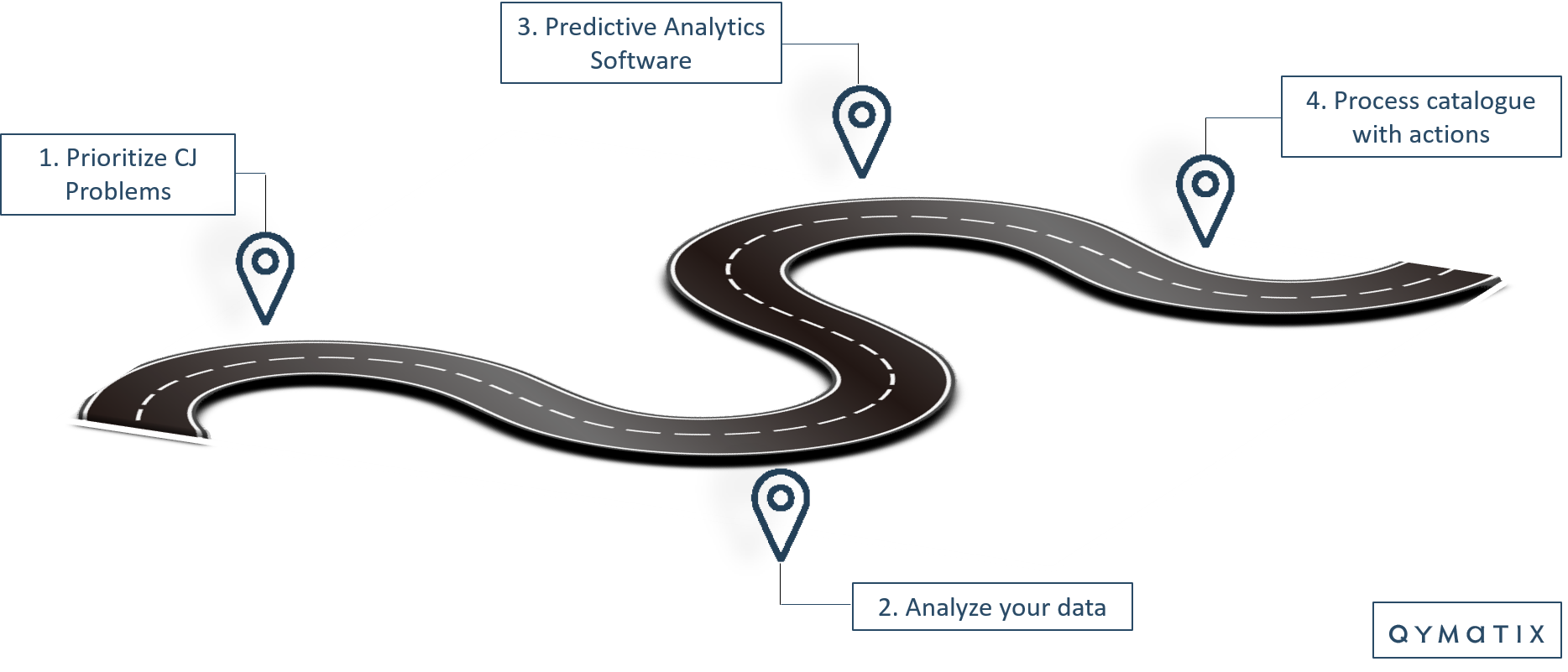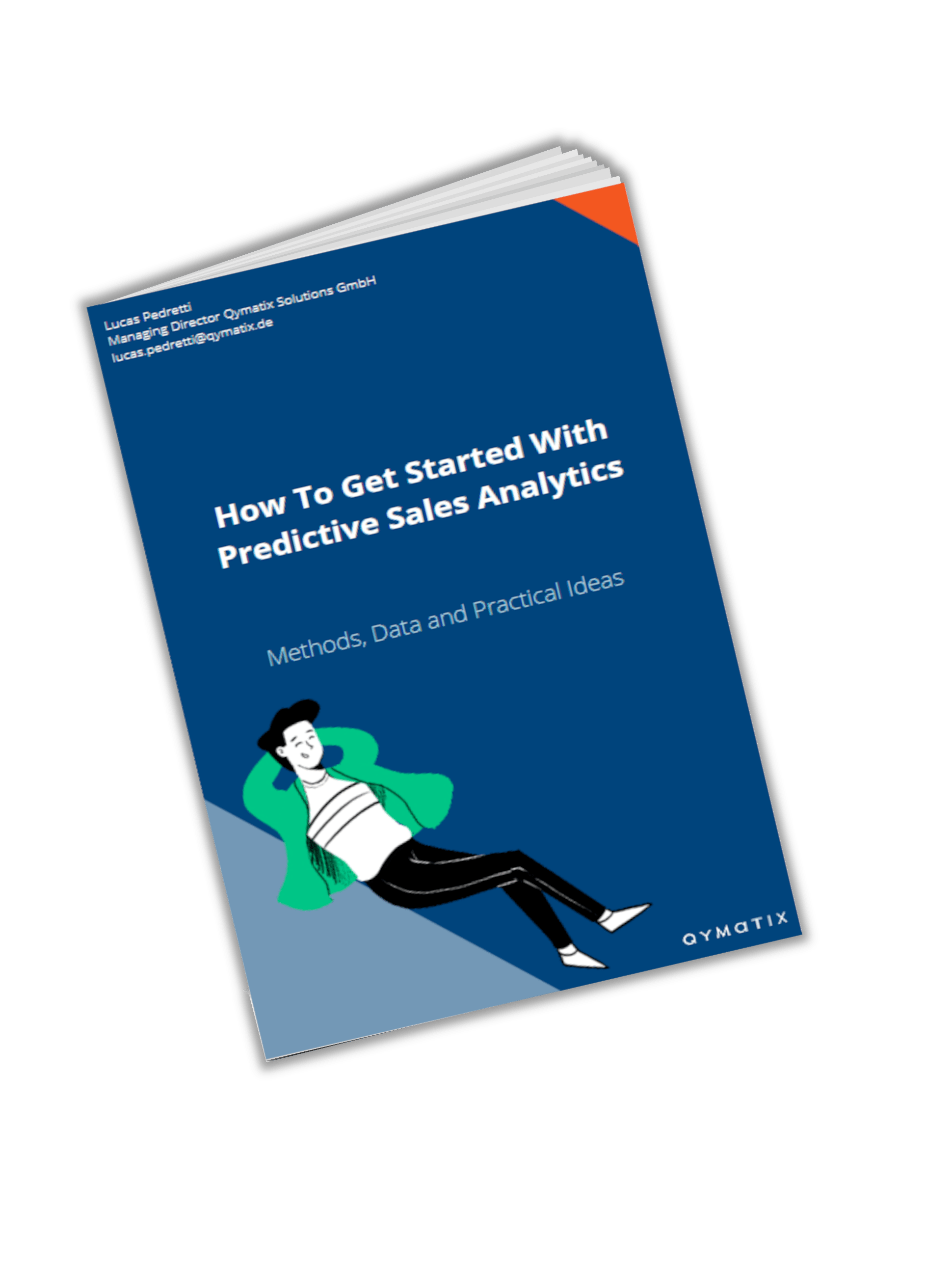About the b2b Customer Journey Management and how Predictive Analytics can help.
Predictive analytics, customer-centric selling, and optimization of the customer journey (CJ) have long been part of everyday life in the B2C sector. In the B2B industry, things look somewhat different. First projects are starting, the theory has already been heard and understood – but there is still a lot of uncertainty regarding the concrete implementation.
That is no wonder. There are some fundamental differences between the B2C and B2B sector. For example, business customers often have higher expectations of the business relationship. It is more important for salespeople to build a personal relationship with their customers and to know their customers.
The responsible salesperson knows the exact titles, the areas of responsibility and usually also the hobbies of his most valuable customers. During a business meeting, it is also a good idea to ask about the family. That means that a personal relationship and trust between buyer and seller plays an essential role in B2B organizations.
Another differentiating factor is the buying cycle. Due to B2B eCommerce the buying cycles in B2B become shorter as well – but compared to the B2C sector, they are usually still significantly longer. That is simply because an entire buying center is involved in the purchasing decision instead of just one person. In a study, the Demand Gen Report analyzes purchasing behaviour in the B2B sector. It says that B2B buying cycles usually last 1-3 months and that in 80% of cases up to 6 people are involved.
Long story short, the B2B customer journey is more complicated than in the B2C area. However, they have one common basis: people. That is why the concept of the CJ is also highly relevant in the B2B sector. Modern software solutions can help you to optimize your customer journey.
In this article, we will first give you a summary of Customer Journey Management. Then you will learn which predictive analytics functions can support your CJ. And finally, we will provide you with tips on how to get started.
B2B Customer Journey Management
The customer journey describes the entire route taken by a customer when purchasing a product or service.
You can roughly divide it into three phases: The first stage is the pre-purchase phase, in which a customer obtains information about the product and weighs up alternatives. After that, the actual purchase of the product takes place in the purchase phase. Finally, the post-purchase phase includes the further retention of the customer in form of using the product, recommendations, or after-sales services.
In practice, these three phases are often divided into further stages. The number and name of these sub-phases can vary depending on the company, industry, or target.
In each of these phases, a customer can have many different contact situations (touchpoints) with the product, the service, or the company itself. Each company has many touchpoints. Whether online, offline, direct or indirect – a touchpoint is a point of contact between the customer and the company: The website, the social media presence, telephone calls with customer service, the web-shop, a poster, radio advertising, a blog post, an article in a magazine or a personal recommendation. The list could go on and on.
A touchpoint is a point of contact between the customer and the company.
And that is why Customer Journey Management (CJM) exists. It aims to design and coordinate all these touchpoints optimally for the customer so that the customer’s journey can run smoothly and without problems.
Show me how to improve my Customer Journey with Predictive Analytics.
Predictive Analytics along the B2B Customer Journey
A predictive sales analytics software analyses your customer data with the help of machine learning (a subarea of artificial intelligence). From this, it calculates probabilities of how customers may behave in the future.
With such software, you can make your B2B customer journey intelligent. Let us look at the different phases of the CJ together and discuss how predictive analytics can help you with this using examples.
Predictive Lead Scoring
This predictive analytics function is crucial in the pre-purchase phase in CJ and maybe also in the purchase phase. A lead is a contact of a potential new customer. In other words, a prospect who is not yet a customer.
Lead scoring is an evaluation of these contacts in terms of various characteristics: How likely is this potential customer to buy? What price will this person probably accept? Through which channel will he/she buy? Etc.
Of course, you can also perform Lead Scoring manually using ABC analyses or other scoring methods. What makes predictive lead scoring different? Remarkably simple, an algorithm does all the work. And even faster and more precise. A software, based on machine learning, analyses the characteristics of past successful and unsuccessful leads. AI transfers these characteristics to current leads, and that is the way how it crates forecasts.
How does this help your CJ? By predicting the behaviour of your potential new customers, B2B marketing and sales can react according to expectations and satisfy the prospects. You can create positive customer experiences more easily.
Predictive churn and cross-selling analyses
We are now in the post-purchase phase. A company is already your customer and uses your products or services. Now it is a matter of providing the customer with excellent after-sales service and informing them about other suitable offers.
If you work in a wholesale company, service company or in a manufacturer, then you know that you can quickly lose sight of the many products and customers yourself. It is impossible to keep track of every single customer journey and to understand what the customer might need.
Fortunately, there is a solution for this as well: churn and cross-selling predictions with the help of predictive analytics. The principle is the same: Using historical sales data, AI-based software predicts which customers might churn and which customers might be interested in which product.
With customers at risk of churn, you know that something is wrong with the CJ in their post-purchase phase. Contact these customers and offer your help. The right amount of attention at the right time can quickly satisfy a customer.
Similarly, appropriate cross-selling suggestions can improve CJ. The right offers could positively surprise your customers. In any case, you avoid randomly generated offers that are very unlikely to interest your customers and, in the worst case, even annoy them.
Road map: The first steps for an intelligent customer journey
As you can see, predictive analytics can save a lot of work and analysis across the entire CJ for you. Beyond that, predictions are much faster and more accurate through machine learning than through manual methods.
If you want to improve your CJ with predictive analytics, we recommend the following approach:
1. Prioritize your “problems” in the CJ. What do you want to improve first? Everything at once is never a good idea. Better start small and take it one step at a time.
2. Do you have the right and enough data? If you want to implement predictive analytics, reliable data is what you need.
3. Now you need a software. You have two options: You have enough internal resources and expertise to write a machine learning program yourself. Or you can find a specialized predictive analytics provider.
4. Create a process catalogue with actions based on the results of your software. An example: What to do if the AI tells you that a customer is about to churn? The information alone is only half the job. It is still up to the people to act accordingly.

Free eBook for download: How To Get Started With Predictive Sales Analytics – Methods, data and practical ideas
Predictive analytics is the technology that enables a look into the future. What data do you need? How do you get started with predictive analytics? What methods can you use?
Download the free eBook now.
- We will use this data only to contact you for discussing predictive sales KPIs. You can read here our declaration on data protection.

Further Read:
2018 B2B Buyers Survey Report. Ed.: Demand Gen Report
Tiffert, A. (2019): Customer Experience Management in der Praxis. Ed.: Springer Gabler
